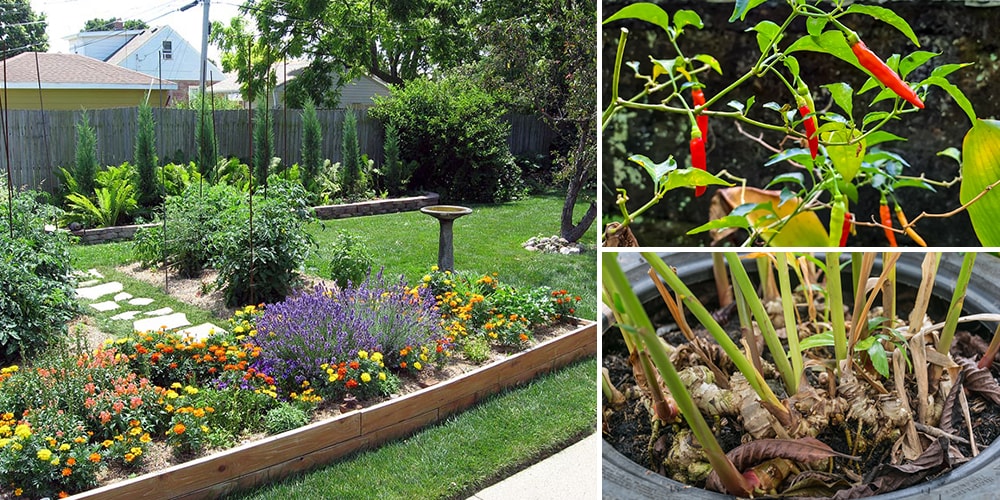
How to Grow Your Own Painkillers at Home
Pain is a real threat that can strike you anywhere. It can be a throbbing headache, chronic back pain, muscle and joint pain, discomfort after exercise, injury or surgery. When our body is injured or suffering from an ailment, the nerves transmit millions of messages into the brain. It is what relays the sensation to tell you that you are in pain.
The easiest way for us to relieve these pains is to reach out for over-the-counter painkillers or analgesics. However, using them for a long time is bad for your health, specifically for the kidney and liver that filter the toxins.
For hundreds of years in traditional medicine, herbs and essential oils have been the go-to painkillers. People used them topically or orally for relief. Like synthetic drugs, herbs are also potent in treating a variety of body and health issues. But, take note that some of them may also cause side effects and drug interactions.
10 Best Painkilling Plants
Painkiller plants or analgesic plants are used for relieving short-term and chronic pain. Their actions are directed at the nervous system or brain to reduce pain signals. Some herbs can induce sleep as they work against pain-causing chemicals. Analgesic tones down the pain but does not remove sensations as anesthetics do.
There are tons of plants that work as analgesics if you happen to urgently need one in the wild. And the good thing is, it is possible to also grow these painkiller plants at home. Most of them are beautiful ornamentals that also offer a therapeutic effect.
Here are a few of those plants you can use to replace store-bought analgesics.
Turmeric
Turmeric (Curcuma longa) is an analgesic and tonic that works against many types of pain. It is most valued for its effect against inflammation, either systemic or localized. The compounds in turmeric reduce oxidation, lower inflammation and reduce pain. It is valuable in treating osteoarthritis and other joint and muscle pain.
Turmeric is a tropical plant that grows well in loose soil with plenty of organic matter and a pH between 5.5 and 6.5. When planting, allow each tuber some space (about 8 inches apart), so the roots can spread out and grow into healthy plants. Turmeric grows well in raised beds, grow bags, and containers. A soil depth of at least 12 inches is best.
For best results, grow your turmeric in the following conditions:
- Sunlight: must have part shade or dappled light. Rhizome development will be very slow if the shade is too heavy.
- Aspect: needs a sheltered location protected from wind.
- Soil: turmeric will grow best in a rich, quality, free-draining soil or premium potting mix
Turmeric pairs well with ginger and cayenne, both are also analgesic spices, to boost its efficacy. Just mix 3 tbsp turmeric powder, 3 tbsp ginger powder and 1 tbsp cayenne powder. Combine them thoroughly and have half a tsp of the mixture in lukewarm water to alleviate pain.
Ginger
Ginger (Zingiber officinale) is also a rhizome that possesses a highly-effective painkilling property. You can grow it in the garden or indoors and use it for a wide variety of dishes and treating health issues. Ginger contains salicylates that transform into salicylic acid that eases nerve pain. It is a popular remedy for respiratory issues that also works great in reducing pain and inflammation.
To grow ginger, cut fresh ginger root into pieces and let them dry for a day or two. Plant them in pots or in the garden with well-draining soil and compost. Keep the ginger in a warm and sunny place, but not too much direct sun. Water the soil to keep it moist, but not oversaturated. Harvest the ginger when the leaves turn yellow and the stems fall. In cold regions, bring the pots inside before the freeze.
To take ginger for pain, just boil a thumb size root in water and drink the decoction once a day.
Lemongrass
Lemongrass (Cymbopogon citratus) is a citrusy-scented grass that adds a distinct zing to many Asian dishes. You can grow this plant well in a wide variety of soils and climates, thriving better in humid and warm climates. It is sensitive to frost but may grow well when kept indoors. Lemongrass works as a sedative that influences the central nervous system. It is very effective against inflammatory pain and digestive stress.
Lemongrass is best grown in a container so you can keep it in a sunny, sheltered spot outside during summer, and move it indoors for winter. When the foliage turns brown, cut back the stems to 10cm. Once new growth appears in spring, feed weekly with a liquid fertilizer.
Here are some tips for growing lemongrass:
- Soil: Lemongrass prefers well-drained soil with a pH between 6.5 and 7.5.
- Sunlight: Lemongrass needs full sun to grow well.
- Watering: Water lemongrass regularly but do not overwater it.
- Temperature: Lemongrass thrives in hot, steamy climates. The time for growing lemongrass outdoors is similar to the timing for tomato planting—when night temperatures are in the 50s, it’s time to plant.
The fresh leaves and stalk of the lemongrass can be steeped into tea or hot brew for soothing the nerves.
Cayenne
The capsaicin in cayenne (Capsicum annuum) is a powerful topical pain reliever that decreases the amount of substance carrying pain signals into the brain. When it comes to painful conditions, there is no other home remedy more reliable than cayenne. Its analgesic medicinal action inhibits the sensation of pain and reduces any inflammations. It is also helpful in alleviating joint pain in osteoarthritis, surgery and nerve damage.
To grow cayenne pepper, you can follow these steps:
- Soil: Cayenne pepper plants prefer well-drained soil with a pH between 6.0 and 6.8.
- Sunlight: Cayenne pepper plants need full sun to grow well.
- Watering: Water cayenne pepper plants regularly but do not overwater them.
- Temperature: Cayenne pepper plants prefer warm temperatures between 60 and 85°F
Here is an easy topical cayenne recipe you can make straight from the plant growing in your garden:
- Dry and dehydrate cayenne peppers.
- Once fully dried, pulse them in the food processor into a fine powder.
- Warm ½ cup coconut oil and add 2 tbsp of the dried cayenne powder and mix them into a smooth gel.
- Apply the gel to the painful area for 20 minutes.
⇒ Eat These 10 Foods For 7 Days Straight To Manage Chronic Pain (Video)
Marigold
The golden bloom of marigold (Tagetes erecta) is an attractive addition to a summer garden. The same flowers also hold a potent medicinal action against pain and inflammation. Marigold contains xanthophyll that exhibits a strong analgesic property.
Marigolds are not fussy. Any good garden soil (and a little water during dry spells) should keep them happy, as long as the soil is not too acidic. Keep the soil pH roughly neutral, from 6.0 to 7.0. They also don’t need soil that is particularly rich in organic matter and seem to grow better in a leaner soil.
Here are some tips for growing marigold:
- Soil: Marigolds are not fussy about soil but prefer well-drained soil with a pH between 6.0 and 7.0.
- Sunlight: Marigolds need full sun to grow well.
- Watering: Water marigolds regularly but do not overwater them.
- Temperature: Marigolds prefer warm temperatures between 70 and 75°F
If you have a wound or blister, the easiest way to reduce it is by crushing the marigold flower and applying it directly to the area. Fresh marigold petals infused in water can also be used to tame painful menstruation and scanty menses.
Horseradish
Horseradish (Armoracia Rusticana) is one of the easiest plants to grow as a vegetable and medicine. You can buy its root pieces in some supermarkets and grow them directly in the garden or containers. The pungent roots of horseradish can spice up a variety of dishes. And it is also beneficial in alleviating colds and flu or reducing pain in arthritis and abscess.
Horseradish is easy to grow from long pieces of root (thongs) or from young potted plants. These should be planted in spring or early summer, ideally in a large container, in sun or partial shade. They can also be planted in a small raised bed or similarly enclosed site. Here are some tips for growing horseradish:
- Soil: Horseradish prefers well-drained soil with a pH between 6.0 and 7.0.
- Sunlight: Horseradish needs full sun to grow well.
- Watering: Water horseradish once or twice a week so the soil is just damp. Learn here how to build a rainwater harvesting and purification system that will give you an endless supply of clean water for your garden, or to drink and cook with.
- Temperature: Horseradish prefers cool temperatures between 45 and 75°F
A decoction of its root’s bark is effective against toothache. You can simply swish and gargle it thrice a day or when needed to numb the pain of an inflamed tooth.
Feverfew
Feverfew (Tanacetum parthenium) is a well-known antipyretic (fever reducer) and antiphlogistic (inflammation reducer.) The herb is very potent so much so that you cannot use it in combination with an analgesic medicine. Feverfew is a super effective overall pain reliever for various pain types.
Before anesthetics, feverfew aided women in labor pain during childbirth. Women also used it for menstrual cramps and treating problems pertaining to menses. If you have ear pains, stomach pains, skin illnesses, toothaches or migraines, take feverfew tincture for immediate relief.
Feverfew is a medicinal herb that is easy to grow. It grows best in well-drained soil and full sun or part shade. Here are some tips for growing feverfew:
- Soil: Feverfew prefers well-drained soil with a pH between 6.0 and 6.7.
- Sunlight: Feverfew needs full sun or part shade for at least 6 hours a day.
- Watering: Water feverfew twice a week in the absence of rain to maintain even moisture.
- Temperature: Feverfew prefers cool temperatures between 60 and 70°F.
Here is a general recipe you can use for many herbal painkillers:
Ingredients
- 100-proof vodka
- 200 grams of dried herb for 1 liter of alcohol; or 100 grams of powdered herb for ½ liter of alcohol
Steps
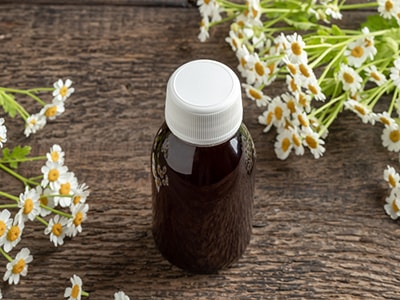
- Place the herb in a glass jar or clay pot.
- Pour the alcohol directly into the jar to cover the herb.
- Seal the container and place it in a cool and dry area.
- Shake the container regularly for 21 days.
- Strain the alcohol and store it in a dry container where it can last for many years.
To use: Fill a dropper or a small syringe with the tincture and dispense it under the tongue. Hold the liquid in your mouth for a few seconds before swallowing it. Use no more than two small droppers of the tincture once a day. Tincture contains alcohol and is not recommended for children unless it is made with non-alcoholic menstruum such as apple cider vinegar or vegetable glycerin.
Rosemary
Rosemary (Rosmarinus officinalis) can grow anywhere and adapt easily to many climates. It is mostly valued as an aromatic herb that adds a distinct scent and palatability to food. In folk medicine, rosemary is mostly used as a brain tonic for enhancing memory and relieving depression. It is also a mild analgesic and antispasmodic to alleviate migraine, rheumatic pain and dysmenorrhea.
Rosemary is a woody herb that is easy to grow from cuttings rather than planting seeds. It grows best in a sunny spot that has soil with sharp drainage. Here are some tips for growing rosemary:
- Soil: Rosemary prefers well-drained soil with a pH between 6.0 and 7.0.
- Sunlight: Rosemary needs full sun for at least 6 hours a day.
- Watering: Water rosemary once or twice a week so the soil is just damp.
- Temperature: Rosemary prefers cool temperatures between 60 and 70°F.
A tea made from fresh rosemary leaves is efficient against back pains, headache, fatigue, sciatica and other joint and muscle pain. Drink rosemary tea twice a day for pain and use rosemary oil to massage painful body areas.
Lavender
Plant the strongly scented and fragrant lavender (Lavandula agustifolia) in your garden and enjoy its aesthetic display and calming properties. Lavender is super effective in slowing down the nervous system and suppressing pain reception. This aromatic tonic herb can lower anxiety without sedating. You can only feel its calming and relaxing effects without getting drowsy.
Aside from the aroma and attractive flowers, lavender is also a good herbal remedy for wounds and skin inflammations. It is effective against joint and muscle problems due to rheumatism and arthritis.
Lavender is a Mediterranean herb that thrives in hot, sunny locations. It grows best in warm, well-draining soil and full sun. Here are some tips for growing lavender:
- Soil: Lavender prefers well-drained soil with a pH between 6.0 and 8.0.
- Sunlight: Lavender needs full sun for at least 8 hours a day.
- Watering: Water lavender once or twice a week so the soil is just damp.
- Temperature: Lavender prefers cool temperatures between 60 and 65°F.
If you are having a hard time with pain, pluck a few lavender flowers and turn them into this soothing tea. Put a few lavender buds into a mug and add 1 cup of boiling water. Let it steep for a few minutes and drink it to relieve muscle pain and spasms. You can take a cup of lavender tea every day for two weeks to indulge in its calming goodness.
Thyme
Thyme (Thymus vulgaris) is an herb that gives an earthy flavor to food and is used in a variety of dishes. This evergreen plant also works as a food preservative with its ability in increasing stability and reducing oxidation in food.
The natural compounds in thyme, thymol and carvacrol, are also convincingly effective analgesics. It can increase the analgesic property of paracetamol and prolong the effect of diazepam.
Thyme is a Mediterranean herb that thrives in hot, sunny locations. It grows best in well-drained soil and full sun. Here are some tips for growing thyme:
- Soil: Thyme prefers well-drained soil with a pH between 6.0 and 8.0.
- Sunlight: Thyme needs full sun for at least 6 hours a day.
- Watering: Water thyme once or twice a week so the soil is just damp.
- Temperature: Thyme prefers cool temperatures between 60 and 70°F.
Thyme is best taken as a decoction for suppressing pain. If you have a nagging headache, take a cotton cloth, fill it with crushed fresh thyme leaves and place it on the affected area. The poultice is effective for neuralgia and deep wounds. For open cuts, use thyme decoction as wound wash before applying the poultice.
Takeaway
Herbs are our natural medication in nature’s apothecary. They were used for thousands of years before conventional medicines were discovered, being the foundation of many synthetic drugs. But, be careful when using these painkillers with complementary medicine as they might boost or reduce their efficacy.
Let us know in the comments if you tried any of these analgesic plants.

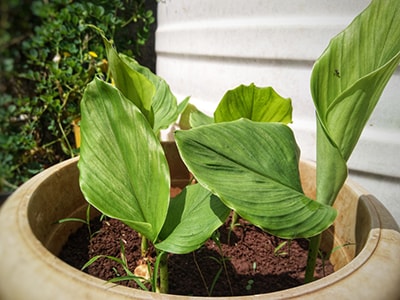
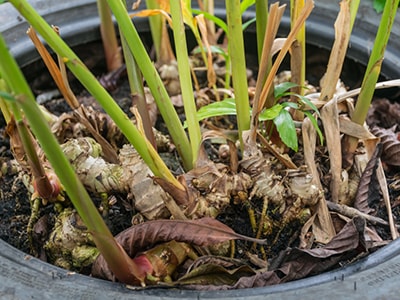
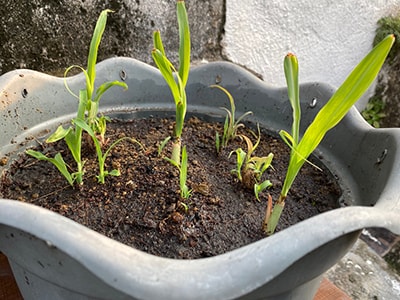
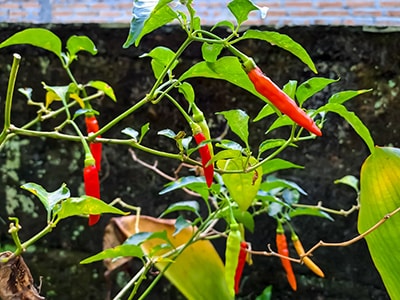
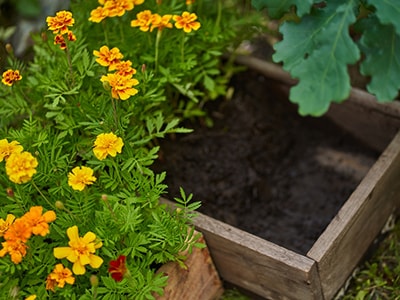
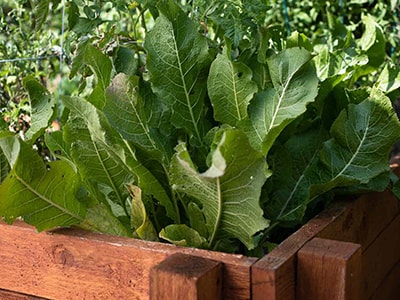
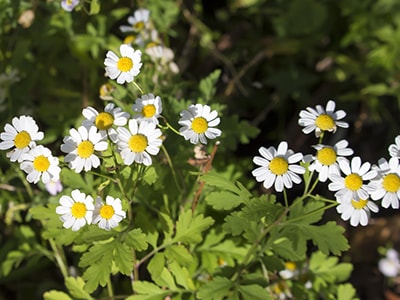
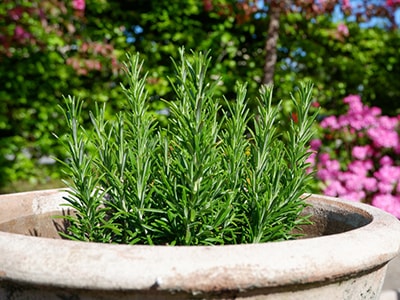
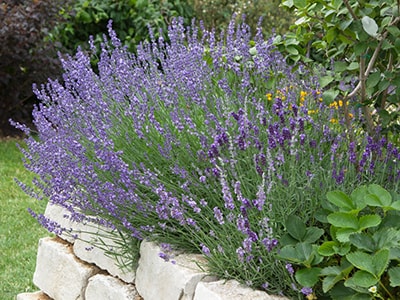
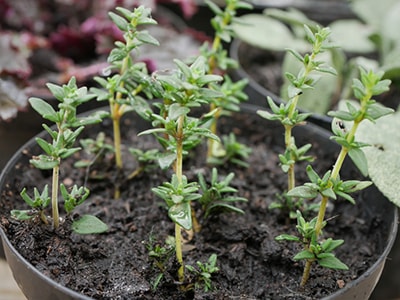
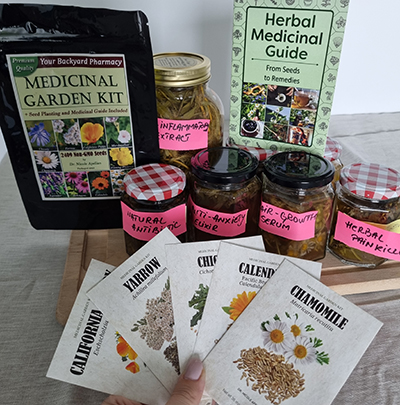
Thank You for all your helpful and natural information. I cherish your books. How should I prepare my home grown (abundant) turmeric bulbs? Dry them or make a paste of them (with the black pepper for absorption)? I also have cayenne peppers and ginger I grow, all in pots. Jennifer from Gold Coast, Australia
Hi Jennifer,
Thank you so much for your kind words! We’re happy to hear you enjoy the books!
We have many articles on our website about turmeric, ginger and cayenne. Maybe you will find some inspiration. Here are some of them:
https://thelostherbs.com/the-natural-booster-turmeric-and-honey/
https://thelostherbs.com/the-diy-turmeric-tonic-thatll-help-you-conquer-a-cold/
https://thelostherbs.com/turmeric-ghee-for-gut-health/
https://thelostherbs.com/i-made-a-tincture-from-turmeric-powder-and-this-is-what-happened/
https://thelostherbs.com/anti-inflammatory-turmeric-tea/
https://thelostherbs.com/turmeric/
https://thelostherbs.com/warming-turmeric-and-cayenne-pain-relief-balm/
https://thelostherbs.com/anti-inflammatory-turmeric-ice-cream/
https://thelostherbs.com/turmeric-lemonade/
https://thelostherbs.com/how-to-make-medicinal-pickled-turmeric/
https://thelostherbs.com/how-to-make-ginger-syrup-for-digestive-issues/
https://thelostherbs.com/50-uses-for-ginger/
https://thelostherbs.com/how-to-make-cinnamon-ginger-salve/
https://thelostherbs.com/fat-blocking-ginger-juice/
https://thelostherbs.com/how-to-make-a-ginger-tincture/
https://thelostherbs.com/cayenne-pepper/
https://thelostherbs.com/gut-health-morning-shots/
I hope they’re helpful.
Many blessings and good health!
Is there wild lettuce in this pack?
Hi Tonie,
Thank you for your interest in our Medicinal Garden Kit!
Wild Lettuce seeds are not included in the pack.
Many blessings and good health!